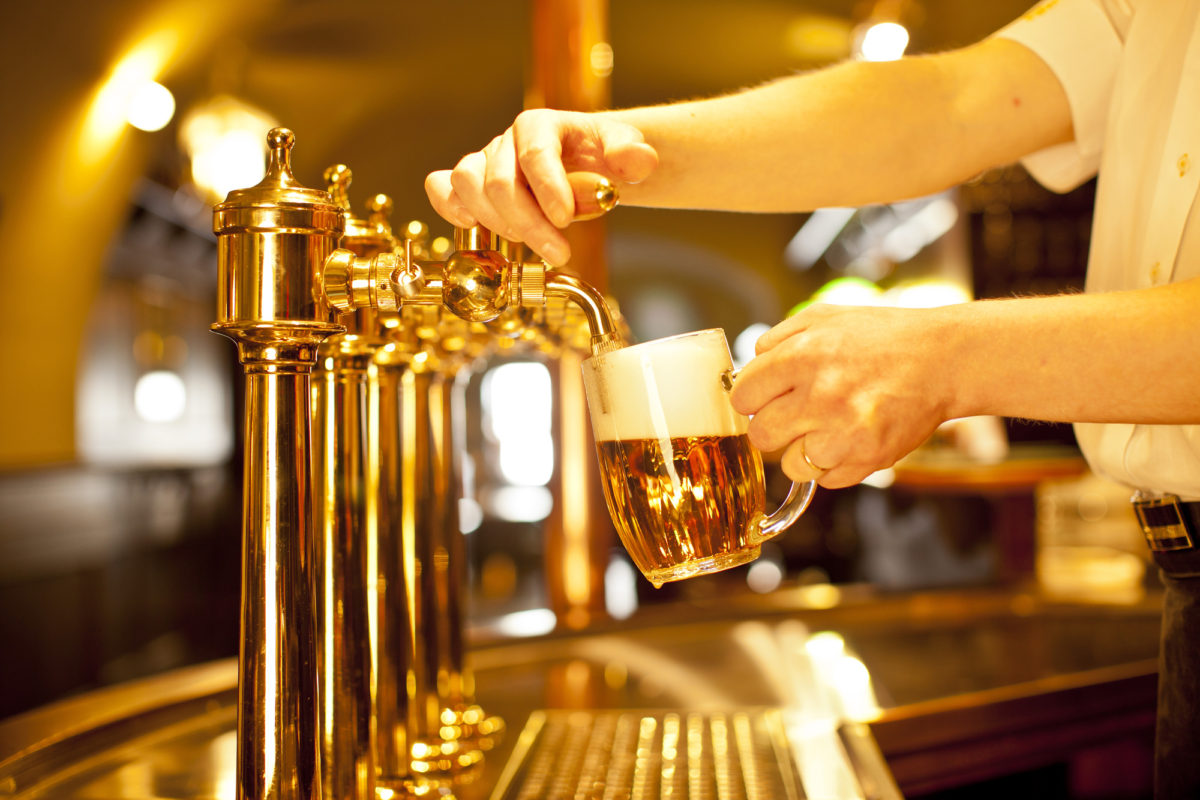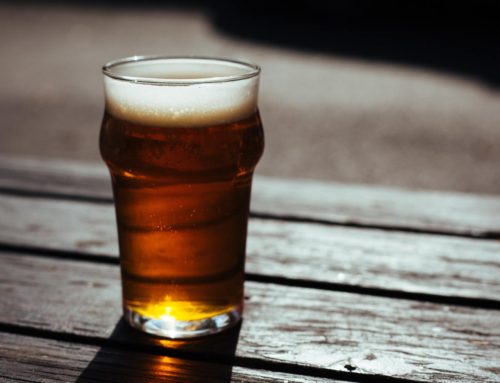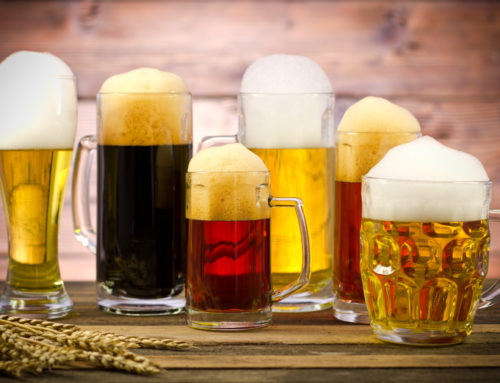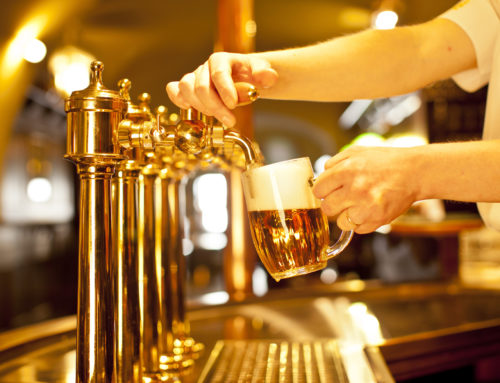“This is grain, which any fool can eat, but for which the Lord intended a more divine means of consumption. Let us give praise to our maker and glory to his bounty by learning about . . . BEER.” –Friar Tuck in Robin Hood: Prince of Thieves
Friar Tuck’s words of wisdom have traveled through the ages to drinkers today, and there’s no better way to learn about beer than to drink it.
But there’s no better way to drink beer than from the comfort of your man cave.
Have you been eying those kegerators or at-home taps? You’re in luck because you’re reading the best guide in the business about how to purchase your first home beer tap.
It doesn’t have to be a dream any longer. Now, it can be a reality.
So take a breath. This is a momentous decision. We’re going to show you how to make it properly.
Benefits
If you need some ammunition to convince your significant other a home dispenser is worthwhile, we’re here to aid you.
You might not realize how much you’re helping the world by investing in a dispenser because sipping that fresh Yuengling might feel like it’s the only benefit you need. However, draft beers offer advantages to you and your fellows.
Most importantly, you get fresh beer. At home. Preferably cooled.
There’s really no beating that. But that same advantage leads to another one: you’ll be spending a lot less on beer.
A 12-pack of Bud Light runs about $10.50. A half barrel, which amounts to 165 beers, averages $87 in the US.
It’s not hard to see the math here. To get the same number of beers from the store (not from the draft), consumers will spend about $144. Draft saves you quite a bit of money in the long run.
Next, draft means less waste. You won’t be adding cans to a landfill somewhere. You can drink happily knowing you’re having less of a carbon footprint than you would if you were drinking bottled or canned beer.
And, lastly, you’ll be the best entertainer on the block, although you might have to fend off your friends when their beer detectors start ringing.
Tell that significant other to think of the turtles. You’re saving them. With your beer.
Types for All
Purchasing your first home beer dispenser is a bit like buying that Viper you’ve always dreamed of. You want it, it’s there and your first urge is to just buy it.
But seriously, hold back. Your draft dispenser is going to be your best friend, and it’s wise to make sure you buy the right one. So let’s cover the basic types.
Your first job is to find which you deserve.
Kegerators
One option is a kegerator. If you’ve been able to enjoy the cool liquid a kegerator offers, you’ll know how these contraptions work.
Basically, it’s a modified refrigerator that has a tap protruding out of it. The tap leads to the keg of golden goodness inside. Carbon dioxide pressure is applied to the keg to force beer out of it and into your cup.
Consistency and carbonation are created through the even pressure applied, making your beer taste great.
There are several types:
- Mini kegerators
- Freestanding kegerators
- Built-in kegerators
There are even outside and commercial ones available, and conversion kits can change an extra refrigerator into a kegerator, although they are complicated to install.
Advantages
Kegerators offer many advantages to true beer connoisseurs. Firstly, anyone with one of these babies can have draft beer on hand whenever they want it.
Secondly, your beer can stay fresh for up to four months. That means instead of days of draft, you have weeks.
Finally, kegerators keep your beer at the proper temperature. As any beer lover knows, this can have a dramatic effect on taste and spoilage.
Disadvantages
To keep the taste and consistency, kegerators require regular maintenance. Every time a new keg is inserted, the device should be cleaned. Most manuals recommend cleaning every two weeks.
These also have the disadvantage of consuming large amounts of space, being fixed to one spot and adding to the electric bill.
The Jockey Box
Besides the traditional hand pump we all recall fondly from our college days, individuals can also invest in a jockey box.
A jockey box is a glorified cooler with coils. A beer line leads liquids from the keg into the box, through the coils, and into your waiting mouth.
Advantages
Jockey boxes are portable (hence the name) and are relatively cheap. Further, they can be a good option for homebrewers.
You can also choose your own faucet, which affects the overall success of freshly-poured beer.
Disadvantages
Although portable, jockey boxes are a pain to lug around. Further, they require the owner to add ice to keep the contents cool. Assembly and disassembly are also time-consuming and complicated endeavors.
Draft Dispensers
That leaves other draft dispensers that aren’t beer fridges or coolers.
The QuickTap Cornelius, for example, is easy to store in a fridge or take with you to a friend’s. Likewise, the QuickTap SS is a portable method to tap a keg without worrying about pressure issues.
There are even tabletop draft dispensers.
Almost all work with easily-adjustable carbon dioxide pressure.
Advantages
Because of the varying nature of these dispensers, you can pick and choose what would best meet your needs. Furthermore, all are portable-friendly or users can choose to keep them safe (and possibly secret) in their fridges for a late-night drink.
Like the kegerators, they use carbon dioxide pressure to ensure a smooth pour.
Disadvantages
These won’t cool your drinks (unless you purchase one that can fit in your fridge) and some may work with only certain keg types, but the latter is true of most kegerators, too.
A Word About Keg Storage
If you’re going to have draft beer, that means you’re going to have to take care of your kegs. (Yes, you can have multiple ones. More on that later.)
Properly storing a keg can increase your beer’s longevity and ensure you have the best flavor possible. The first thing to consider is temperature.
Experts argue about temperature, but one thing is certain: whatever the temp may be, it should be consistent. If you plan to serve your beer from the keg, keeping it between 30 and 40 degrees Fahrenheit is optimal.
If you have an extra keg waiting to go, keep it out of the light, as this is even more damaging than heat.
Finally, keep the pressure between 10 to 12 psi. If the pressure is too low, you get the foamy and flat beer we all remember from The Ghosts of Kegs Tapped in the Past. If the pressure is too high, the beer will spurt out at everyone, then become foamy and flat anyway.
Pretty simple, right? If you can handle the keg storing and you have a general idea of what dispenser type you need, it’s time to get down to the brass tax: your wallet.
How Deep into the Wallet Should You Go?
Your next job is to decide on a price range. An at-home draft system or dispenser can cost anywhere from $50 to thousands of dollars.
A kegerator generally runs around $500, but a good dispenser will cost around $150 or $200. Jockey boxes range in price but expect to pay about $200 for a cheap one.
Also, consider the local prices of kegs around your area to get a better idea of what you’ll be spending once you are ready to pour. Take time to look into replacement parts, too.
Break Out the Measuring Tape
Decide whereabouts it would be most convenient to pour beers in the holy man cave. Measure the area to get an idea of the dispenser you can handle.
If you live in an apartment or small area, don’t fret. Draft dispensers can literally be kept in the fridge and then used on a tabletop.
However, in getting an idea of where the goody machine will be stored you’ll save yourself hassle down the road. Nothing is worse than getting a home system and discovering you can’t use it.
All the Beer!
Are you a Samuel Adams-only drinker or do you prefer to live vicariously through different brands? Knowing this makes a huge difference in what you buy.
If you drink one type of beer and don’t plan on changing it any time soon, a single tap dispenser is all you’ll need. You can hook it up to your beer type of choice and sip (or gulp, we don’t judge) the night away.
However, if you entertain often or enjoy multiple types of beers, a dual tap or higher count tap might be better. Options and adapters are available no matter what type of dispenser, jockey box or kegerator you choose.
Remember: once you open the keg, it’s there for a few months, so you better like what you’re dispensing.
One Size Does Not Fit All
Keep in mind capacity. How much beer can you handle?
Decide on the size keg you would like to use for your home beer dispenser to hone down your choices further. Are you a corny keg type of guy or an all-out, full-size kegger?
Here are the basic types with their capacities measured in 12-ounce beers:
- Corny Keg – 53 beers
- Quarter Barrel (Pony Keg) – 82 beers
- Half Barrel – 165 beers
We know what you’re thinking: can you really ever have too much beer? Yes. And if you don’t believe us, imagine how terrible you’ll feel staring at a half-full keg of sour beer.
You have to take care of your beer. Period.
That means not having more than you’ll drink. If you do, the beer will oxidize or “skunky thiol” will take over.
Yes, there is a reason bad beer smells and tastes like a skunk: the component that makes it go bad (usually the result of too much light) is similar to the spray skunks think it’s funny to shoot everywhere.
Don’t skunk your beer. Purchase the size you’ll need.
Just Beer or Other Cool Accessories?
So you’ve decided on the type, the size, and the capacity. You can hear the loud beeps as you zero in on your target.
Now, let’s consider other cool accessories. You may just want the beer and care about nothing else, but trust us when we say some dispensers come with pretty nifty gadgets.
For instance, keg coolers can ease your worry if you’d prefer a portable draft dispenser but want to avoid the jockey box. Likewise, kegerators come with digital displays, LED lighting and more.
Research
Are you ready to find your perfect beer mate? Research everything you’ve decided and let The Beer Force guide you.
While browsing options, take special note of customer reviews. After all, there’s no better place to know what you’re getting than other die-hard beer lovers.
Especially pay attention to the following list of questions for each product:
- How much maintenance is required?
- How happy is the customer base?
- How durable is the product? Find what it is made out of to get a better idea.
- Is it easy to use?
- If you’re researching a kegerator, how noisy is it? Some can bring quite a loud hum to the party.
Narrow down your results to the best product. Finally, it’s time to look for deals.
Saving the Green for the Gold
You’re so close you can almost taste it. The beer, that is.
If you have the extra cash handy and aren’t looking for a deal, you can “sip” your way to the next step. However, if you’re interested in saving some hard-earned cash, read our list of tips.
Your best bet is to hit the shops on major holidays, especially around Father’s Day or Oktoberfest. After all, beer has its own holidays, too. Likewise, Black Friday abounds with sales as well as Labor Day, the Fourth of July and Memorial Day.
But if you can’t wait, we don’t exactly blame you.
Get Your Home Beer Tap
Finally, it’s installation time. Installation depends on the type of kegerator, jockey box or dispenser you choose.
And once it’s installed, you know what that means: draft beer in your home.
Since we’re impatient, we always think simpler installations are better.
That’s also why we offer some of the most innovative and effective home beer tap products on the market. QuickTap was formed with two things in mind: beer and convenience. All of our items reflect this fortitude.
If you’re ready for a dispenser that’s portable, easy to use, inexpensive and convenient, look no further. Our shop has everything you need.
After all, any fool can eat grain. But only the wisest of us turn that grain into something better: beer.






